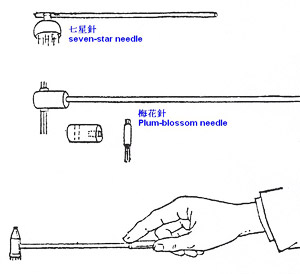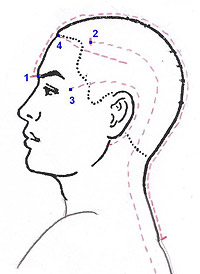Needle Tapping Therapy
 Plum-blossom needle and seven-star needle used in Chinese medicine
Plum-blossom needle and seven-star needle used in Chinese medicine
 Needle tapping route chart for headaches
Needle tapping route chart for headaches
 Plum-blossom needle and seven-star needle used in Chinese medicine
Plum-blossom needle and seven-star needle used in Chinese medicine
 Needle tapping route chart for headaches
Needle tapping route chart for headaches
A subsidiary of Integrated Chinese Medicine Holdings Limited
Room 209, 2/F, East Ocean Centre, 98 Granville Road, Tsimshatsui East,
Kowloon,
Hong Kong SAR China
TEL: (852) 2739-2611 Fax: (852) 2721-2451
© 2020 Shen-Nong Limited All rights reserved.

